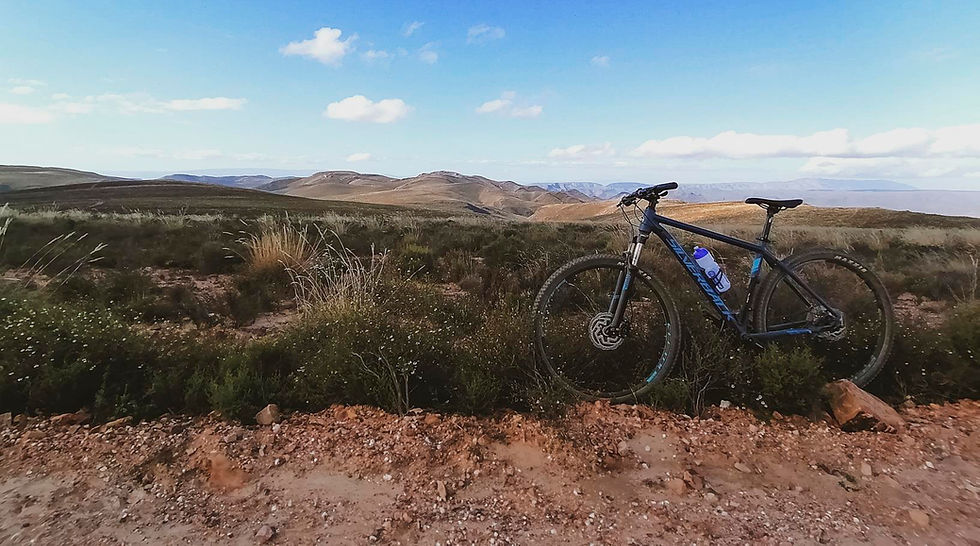Searching in the tall grass....
- Alouise Lynch - Bionerds

- Dec 9, 2019
- 4 min read
Updated: Dec 11, 2019
Early sunrise across the Agulhas Plain, dawn chorus fully under way with the haunting hoot of a Red-Chested Flufftail teasing one’s binoculars to your eyes without any hint of a sighting… this morning promised an experience that, until recently, we had thought to be impossible in the Overberg.

It never takes much to get a group of keen birders out into the field to look at our feathered friends, so throw in an opportunity to see a vulnerable species that is relatively unknown in the region, and the binocular bearing crowd will jump at the opportunity to participate. Add in the fact that their presence will contribute to the scientific knowledge of the species, and it quickly becomes evident that we have a VERY caring birding community!
African Grass Owls are well known from the northern areas of South Africa where they inhabit the rank grasslands where they are well researched and regularly monitored. This is not the case on the Agulhas Plains, they are not well known and there have been no research done on them in this region – this species is a true Agulhas Plain enigma.
There's been no research done on the African Grass Owls on the Agulhas Plains until now.
13 avid birders left Cape Town at dawn and met the Bionerds team in Bredasdorp long before any coffee shops had opened, but we managed to all get our “make us feel human” cuppa from Seattle Coffees – and headed out to our first official Agulhas Plain African Grass Owl Research Project survey for this season.
The Agulhas Plain is an agricultural patchwork of crops and pastures. Small fragments of natural vegetation are scattered across the landscape and these are the areas we targeted for our surveying.
African Grass Owls can be confused with Marsh Owls – and both of these species can easily be confused with Western Barn Owls if the observer is not familiar with the species. Some farmers in the region are very aware of these owls and reluctant to allow anyone onto their farms in fear of the owls being disturbed, or worse, the nests being trampled. Some of the landowners we work with, who did not know that their “barn owls” are actually African Grass Owls – are just as excited as us to learn more through our research on this species, and we are grateful for their support and the assistance we get from them during our surveys.

When we arrived on site Keir briefed our volunteers, explained the survey methodology, and asked each birder to please collect any owl pellets for prey analysis at a later stage. The walking in this vegetation is tough, the grasses that dominate this particular site forms dense clumps that “floats” ankle height from the ground… the last thing you want to do is lose your footing, it is such a struggle to get up again!
The group, led by Keir, started on the largest section and walked a straight line transect, all at the same pace, with a 2-meter gap between them. Any sightings of feathers of feeding platforms, tunnels and runs, were noted. All pellets were collected along with the GPS locations for future reference.

One of the volunteers, Maisie from the Grootbos Foundation, chanced upon a Spur-winged Goose Nest – with lots of eggs!!! The fright of the goose flying up had everyone startled for a moment, everyone’s senses sharpening, and just in time...
A few meters further the first African Grass Owl for this season’s surveys silently took flight in front of the whole group. Everyone had eyes on it, some even managed to snap off some amazing photos!
Post-sighting adrenaline had everyone in awe at the sight of this elusive species! After a few minutes the volunteer line slowly started moving again – and less than ten meters further a second African Grass Owl flew up, banked against the blue morning sky and disappeared behind a tree.
What an amazing experience – it was hard to gauge who was more excited – these nerds, or the rest of the birding volunteers that joined us out of Cape Town.
Thank you so much to every one of you that joined and supported this survey.
A special thanks to Keir for leading the survey and for Trevor Hardaker, Michael Mason and Andrew De Bloc that give us permission to use their photos for this project.

Bionerds learned about this species presence on the plains a few years back and have been monitoring a pair that have been breeding on the plains for the last 12 years. Bionerds started monitoring this breeding site in 2017 and decided early in 2019 that there is a need for a dedicated research project into this species in this region. The Fynbos Trust helped Bionerds with funds for equipment needed to do the surveys and the Overberg Crane Group awarded Bionerds a Small Grant for this project which assists us with logistics and support for the surveys. Collaborations are very important in the conservation landscape and Bionerds work alongside various organizations, including the Nuwejaars Wetland SMA, Grootbos Foundation and CapeNature - hand in hand we will tackle research into the threatened avian species on the Agulhas Plain.
A large portion of this project is self-funded, please visit our project page to see how you can get involved by either supporting our African Grass Owl Research with a small donation, or becoming a volunteer on one or more of our surveys – hope to hear from you soon, or see you in field next time!


















Comments